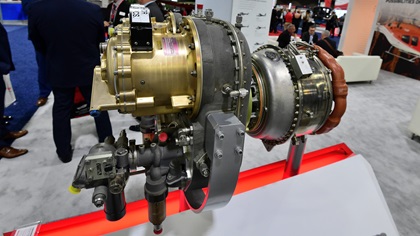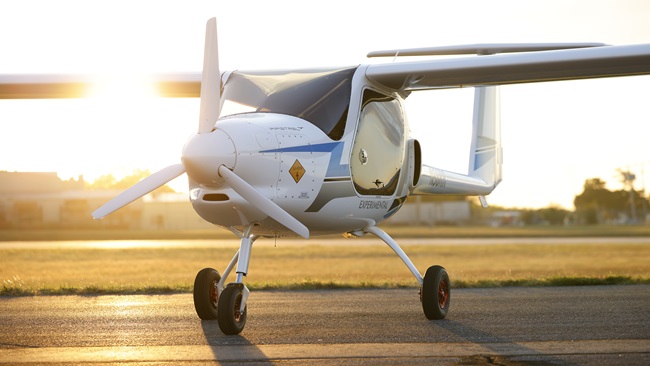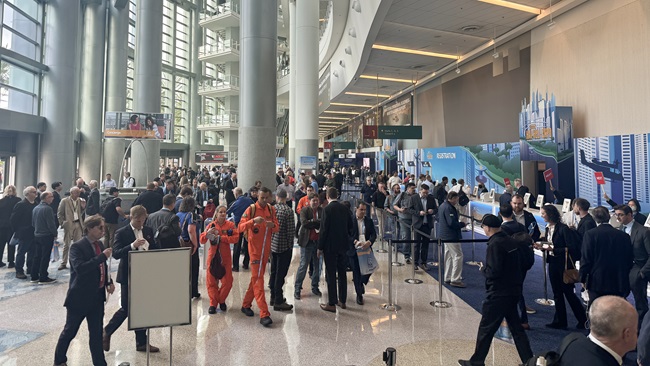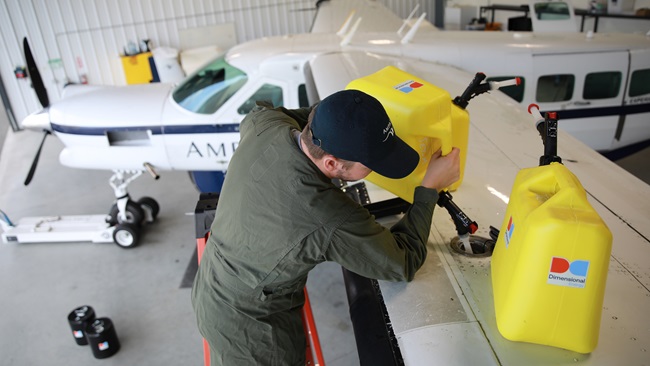Urban air taxis closer to takeoff
Development efforts increasing
Electric vertical takeoff and landing (eVTOL) aircraft, like those sought by Uber Elevate and other aspiring providers in the developing urban air mobility market—on-demand, automated passenger or cargo transportation services, likely operated without a pilot—were a topic of lively discussion at the Helicopter Association International’s Heli-Expo 2019 in Atlanta March 4 through 7. And while the technology is not yet here, it has made noticeable advances in the past year.
One of the more robust conversations occurred during a panel discussion, The Electric VTOL Revolution, presented by the Vertical Flight Society on March 6. The society’s World eVTOL Aircraft Directory currently lists more than 150 eVTOL aircraft concepts.
When technologies converge they historically move quickly, and companies have to be prepared, said Scott Drennan, Bell vice president of innovation. “Bell is moving forward now.” Why do the ducts, with redundant electric motors, rotate? “We want to cruise like an airplane. The ducts in forward flight create lift and thrust, not just lift.”
Don’t expect the Nexus to create a demand for pilots, however. “It’s manned/unmanned,” he said. “Our initial vehicle will be completely autonomous,” but he knows a piloted version will be required.
Another product would be strictly unmanned. “We’ve started to develop a family of aircraft called APT, for Autonomous Pod Transport,” Drennan explained. It’s a larger system than a drone that would make backyard deliveries, and APT recently received an experimental airworthiness certificate. “Now we can fly it like our traditional test vehicle, albeit in more remote areas.” The APT 70, which weighs 300 to 325 pounds, has a 70-pound payload; it, too, was displayed at Heli-Expo.
“It’s an undeniable fact that future mobility is vertical,” said Zach Lovering, Airbus vice president of Urban Air Mobility Systems. In São Paulo, Brazil, today an app can summon a helicopter and take a person to the airport in 10 minutes—compared to a two-hour drive. And Airbus has tested a single-passenger air vehicle at speeds up to 50 knots. “Transition ends around 80 knots. It’s getting pretty close to making it all the way through transition.”
Since Airbus started the project three years ago, the team has grown from two to 40 people. “I think for Airbus, in some ways, the vehicles are the easy part. You need a lot more than just aircraft,” Lovering said. “Helipads today don’t have charging capability—that has to be built up. In many cities there isn’t helipad infrastructure.”
French-based engine manufacturer Safran is developing a range of gas turbogenerators to power hybrid-electric vehicles. “For us, full electric will happen gradually,” said Thierry Grison, vice president of business development for hybrid new market. “For the application we’re considering, we don’t think we’ll have full electric until 2040.” Battery density is the greatest challenge, he added.
Urban air mobility and eVTOL really need another 10-fold increase in battery density, said Todd Winter, president and CEO of True Blue Power, outside of the discussion—and that’s compared to his Gen5 lithium-ion batteries, which provide three times more energy per pound than lead-acid or nicad batteries. “That technology is not available in the market today.”
Safran projects three categories of propulsion: logistics of 150 kilograms or more, requiring 100 kilowatts to 600 kW, in 2025; urban on-demand mobility for four to five passengers, requiring 200 kW to 600 kW, between 2025 and 2030; and a longer-distance commuter aircraft carrying nine to 19 passengers, requiring 600 kW to three megawatts, after 2025.
What will be the effect on the helicopter market, where Safran currently sells a lot of engines? “For us the impact will be very limited, because this is a new market,” Grison said.

Honeywell, which did not participate in the Heli-Expo panel, also is investing in hybrid electric propulsion. It has paired the 1,081-shaft-horsepower HTS900 turboshaft engine with a gearbox and two, 200-kilowatt TRL6 generators. “We see it starting off as hybrid-electric in the near term and eventually transition to a point where electric is dominant,” said Bryan Wood, senior director of hybrid electric/electric propulsion. “From the discussions we’ve had, this [engine] appears to be the sweet spot,” but other engines can be used.
“We’re aligning our schedules with respect to the OEMs we want to work with,” who aren’t targeting entry into the urban air mobility market until 2023 to 2025, Wood said. “That’s when we’ll have gone through full-scale development and testing.”
Honeywell’s involvement in this new market is not limited to propulsion. It’s collaborating with Slovenian light aircraft manufacturer Pipistrel to integrate its avionics, navigation, flight control systems, and connectivity into a future VTOL aircraft that can support autonomous operations. Pipistrel is one of Uber’s vehicle development partners.
“Avionics-wise, we’re investing in the market,” said Rolly McFarlin, senior director of new business development for electronic solutions, who noted that of the 150 potential manufacturers in the Vertical Flight Society’s directory, “only a half a dozen are traditional aircraft manufacturers.”
Today’s jet avionics are too heavy and expensive for this market, he said. “We’re going to support the market with something that’s the right size, weight, and price point.
“You have to look at it from a systems standpoint,” McFarlin added. “There’s no technology here that Honeywell hasn’t done,” from fly by wire and integrated avionics to connectivity, weather, and flight planning.
He said Honeywell will develop a system that supports piloted and fully autonomous operation. “These will become, at some point in time, fully autonomous aircraft.”
The Vertical Flight Society panel discussion at Heli-Expo also addressed heliports and infrastructure requirements, as well as mechanisms for funding infrastructure and technology development.




